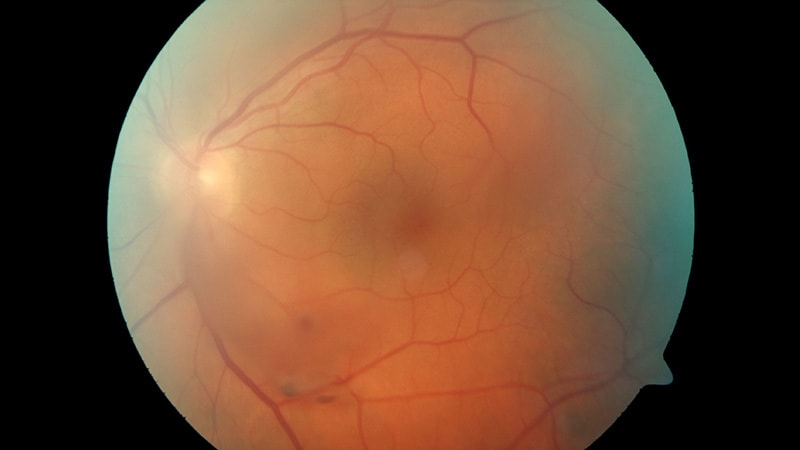Dilated fundus exams have been the gold standard for detecting retinal tears in patients with acute posterior vitreous detachment (aPVD), but alternative techniques such as fundus photography and ultrasonography also can accurately identify the condition, according to research presented on May 9 (Abstract 6678) at the 2024 annual meeting of the Association for Research in Vision and Ophthalmology (ARVO).
More ways to reliably detect retinal tears could mean easier access to care, including via telemedicine, said Elza Rachid, MD, with the University of Miami Health System Bascom Palmer Eye Institute, in Palm Beach Gardens, Florida.
In a new study, Rachid and colleagues assessed the accuracy of fundus photography and 20-MHz B-scans. They found that both approaches “showed noninferiority to the gold standard” in detecting retinal tears in patients with aPVD.
Optical coherence tomography (OCT) was accurate in confirming the diagnosis of PVD, they said.
“Even though the sample size was small, the results are promising and open the grounds for using telemedicine for those who do not have access to ophthalmology clinics and to provide timely referral for treatment,” Rachid’s group reported.
The findings were based on examinations of 35 eyes of patients evaluated for aPVD who had had symptoms for less than a month. The patients underwent two dilated fundus exams with indentation by retina specialists, B-scan, Optos fundus photography, and OCT imaging.
In all, 17% of the eyes had retinal tears. B-scan and fundus photography had “very good agreement” with the dilated fundus exams, and both techniques had “the same high level of accuracy” — 97% — in the detection of retinal tears, the researchers reported.
B-scan’s sensitivity was 100% and its specificity was 96.6%. For fundus photography, the sensitivity was 83.3% and the specificity was 100%.
The researchers plan to recruit 250 participants in all, Rachid told Medscape Medical News.
“If we get the same promising results with the completion of the study,” it could support the use of multimodal imaging instead of dilated fundus exams when access is an issue, she said. “For ease, comfort, and speed, a telehealth visit where the images are reviewed remotely by an ophthalmologist could suffice.”
The 20-MHz B-scan annular array used in the study is a new model that is not yet widely available, Rachid noted. In addition, B-scan imaging requires special technical training, and results can depend on the technician operating the equipment.
The initial interim analysis indicates that B-scan may be more useful as a screening test, while fundus photos could be a better confirmatory test. “While they could be used separately, they are even more accurate when used in combination,” she said.
The researchers had no disclosures.
>>> Read full article>>>
Copyright for syndicated content belongs to the linked Source : Medscape – https://www.medscape.com/viewarticle/imaging-techniques-may-match-gold-standard-retinal-tears-2024a10009as
